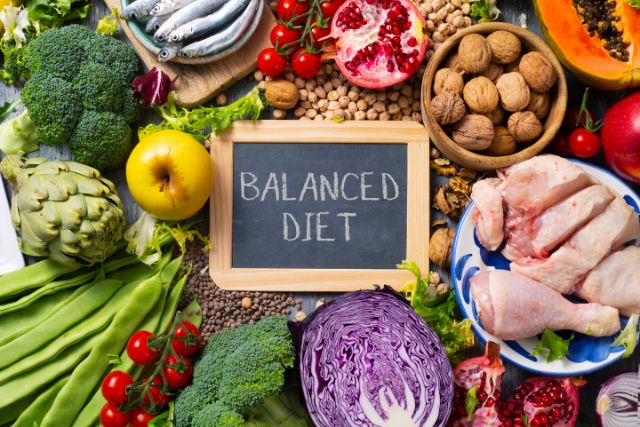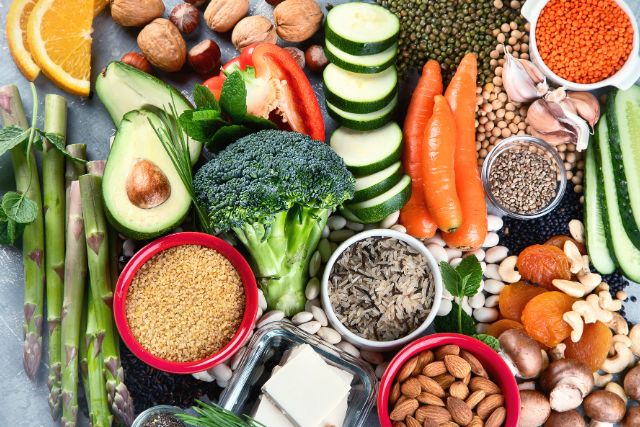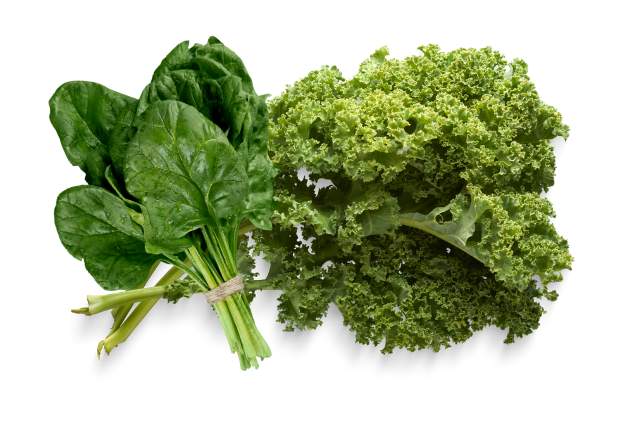Recent Posts
-

- Diabetes-Friendly Nutrition: Smart... 08.12.2024
-

- Nutrition for Chronic... 08.12.2024
-

- Anti-Inflammatory Diet: Food... 08.12.2024
-

- Low-Sodium and Heart-Healthy:... 08.12.2024
-

- Plant-Based Diets for... 08.12.2024
Kale vs. Spinach: Which One is Healthier?

The dark, leafy greens are making the most of a fight for good health. Have you decided to put your money on the better option for your health?
The phrase "leafy greens" refers to a wide variety of plant leaves consumed as a vegetable because of their high nutritious content. A wide range of flavors and textures can be found in leafy greens, and depending on the variety, some may taste better when eaten raw, while others are better when cooked.
Carbohydrates may be obtained healthily from leafy greens. They are generally lower in fat and calorie content than most other meals, although they may still include protein and several other nutrients. According to research published in 2020, green leafy vegetables often have bioactive elements such as niacin, omega-3 fatty acids, flavonoids, carotenoids, sulforaphane, and other similar substances.
These compounds can provide antioxidant and anti-inflammatory properties, which may lead to many health benefits. Some examples of these benefits include a reduced risk for health conditions such as stroke, anemia, high blood pressure, certain cancers, and diabetes. In addition, these compounds may also lead to improved cardiovascular health. They may also help boost the health of the intestines and immunity and the health of the heart, bones, and skin.
There are wide varieties of leafy greens available, but for this essay, we will concentrate mainly on kale and spinach. Now, let's talk about the difference between the two veggies.
The cruciferous vegetable known as kale is characterized by its dark green leaves and significant nutritional content. It belongs to the same family as cabbage and Brussels sprouts, known scientifically as the Brassicaceae family. Its leaves, much like those of cabbage, are very resilient and can withstand both high heat and low temperatures while growing. It translates well in the kitchen: you can eat your leafy greens all year round with kale, which is one of the reasons why people can't get enough of it. Kale is incredibly versatile.
On the other hand, spinach, also known scientifically as Spinacia oleracea, is a dark green leafy vegetable first cultivated in Persia. It is a member of the Amaranth family and is connected to quinoa and beets via this family. In addition to this, it is said to be incredibly nutritious since it is packed full of various nutrients and antioxidants.
Spinach may be cooked in a variety of different ways. It is available both fresh and tinned and may be consumed either cooked or uncooked. It works well both on its own and in combination with other ingredients. The edible leaves are arranged in a rosette, and a seed stalk will emerge from the center. The leaves of the simple plant are often triangular or oval, and they may be smooth or puckered. The blooms are not very noticeable and give rise to little dry fruits. If you want your spinach to develop quickly and have the most leaf area possible, you need to grow it in cold weather and in deep, rich, and well-limed soil.
The following is more information on the veggies mentioned above.
Variations in Nutritional Composition
Both kale and spinach are very healthy greens that are low in calories and supply various essential vitamins and minerals. Kale is incredibly nutritious. They both include a significant amount of vitamin K, an essential vitamin that plays a vital role in creating bones and proper blood clotting.
In addition, they contain a lot of vitamin C, an essential nutrient for maintaining healthy immune function and warding off illness. Fiber and other critical micronutrients, such as vitamin A, riboflavin, and calcium, may be found in both foods, although at varied levels.
But kale has more than double the amount of vitamin C that spinach does, and kale also has more folate, vitamin K, and vitamin A than spinach. Nonetheless, even though spinach and kale contain varied quantities of particular elements, they are generally very healthy vegetable options.
Possible Advantages to One's Health
Both kale and spinach have been associated with many positive health advantages besides each feature's great nutritional profiles. Both are abundant in antioxidants, which are molecules that help protect your cells from oxidative damage and guard against chronic diseases.
It has also been shown that each has a beneficial influence on the heart's health by lowering several risk factors for heart disease, such as high cholesterol and blood pressure. Including these delightful greens in your diet may be an excellent technique to increase weight reduction since they are low in calories but rich in nutrients. Kale and spinach are two examples of greens that fit this description.
Oxalates are abundant in spinach.
Spinach has a high concentration of dietary oxalate, a chemical that binds to calcium in the body and prevents calcium from being absorbed by the body. Consuming foods high in oxalate may also cause an increase in the amount of oxalate that is excreted via your urine, which can result in the development of calcium oxalate kidney stones.
When spinach is boiled, the percentage of oxalate in the diet may be reduced by as much as 87%.
Goitrin might be present in kale.
Cruciferous vegetables like kale contain goitrin, a chemical that may interfere with thyroid function. It does this by lowering the body's ability to absorb iodine, essential for creating thyroid hormones. Cruciferous vegetables like kale are found in the cabbage family.
Spinach, like other cruciferous vegetables like kale, has goitrogenic qualities. Nevertheless, the amount of these compounds in spinach will likely be much lower. Having your thyroid work improperly may affect your metabolism, leading to weariness, sensitivity to colds, and weight changes.
Therefore, if you have thyroid problems, cooking kale or spinach before you eat it and ensuring you get enough iodine from foods like seafood and dairy can help prevent any side effects caused by goitrin. Additionally, cooking kale or spinach before you eat can help you absorb more of the nutrients in the food.
Hence, the issue that has to be answered is which ones are healthier.
Both kale and spinach have a high nutrient content and are linked to various health advantages. Kale has more than double the amount of vitamin C than spinach, while spinach has a higher folate content and vitamin A and K content.
Both are associated with better heart health, weight reduction, and enhanced disease protection. As a result, consuming both as part of a nutritious and well-balanced diet can ensure that you can take advantage of the specific benefits each offers and provide a bit of variety to your regular meals. This can help you achieve your dietary goals of maintaining a healthy weight and feeling good.
Disclaimer: The information provided in this article is for general information purposes only. All information in this article is sourced from other websites, and we do not represent any rights regarding the contents and information on the site. All rights belong to their original owner.
Sources:
- Leafy Greens | EatFresh
- Green leafy vegetables: Definition, nutrition, and benefits (medicalnewstoday.com)
- Kale: Health benefits, nutrition, diet, and risks (medicalnewstoday.com)
- What Is Kale? (eatingwell.com)
- Spinach 101: Nutrition Facts and Health Benefits (healthline.com)
- Spinach | Description, Nutrition, Types, & Facts | Britannica
- Spinach vs. Kale: Is One Healthier? (healthline.com)





